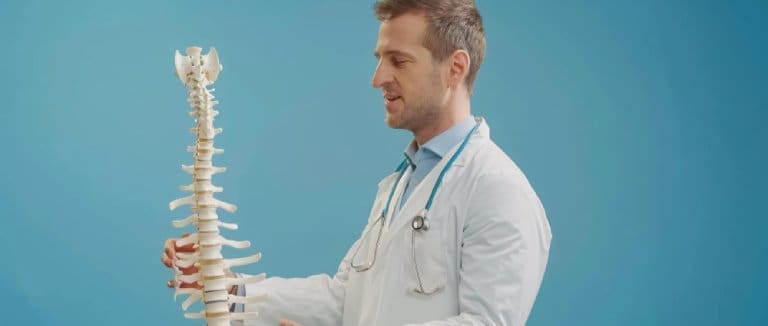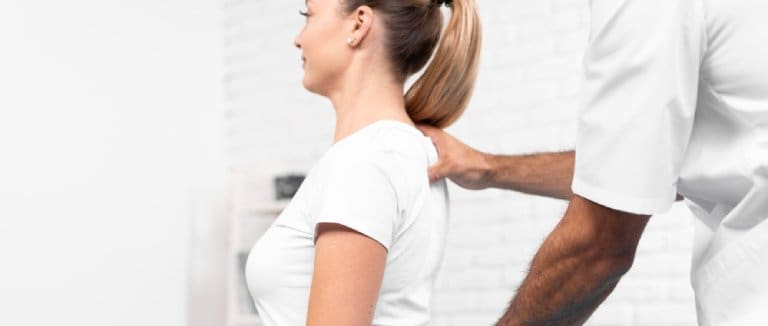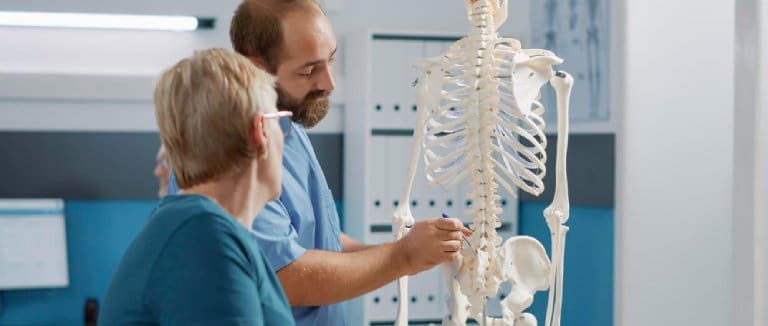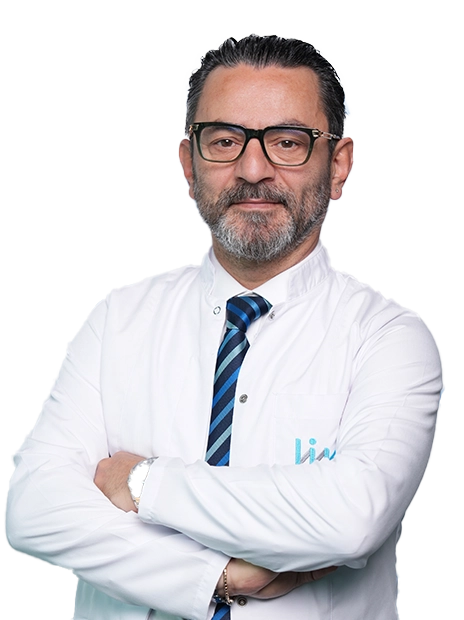Spinal Scoliosis: Symptoms, Diagnosis, Treatment, and Exercises
Spinal scoliosis is a medical condition defined by an abnormal curvature of the spine. It can affect individuals of any age and may lead to pain, discomfort, or, in some cases, more serious health complications. In this blog post, we will explore all aspects of spinal scoliosis, including its symptoms, diagnosis, available treatment options, and recommended exercises. Join us as we delve into the nuances of this condition and discover effective ways to manage its symptoms and improve quality of life.

What Is Spinal Scoliosis?
Spinal scoliosis is characterized by an abnormal lateral curvature of the spine, often accompanied by a rotational component. Scoliosis can affect different regions of the spine and is typically classified based on the location and cause of the curvature. Common types include idiopathic scoliosis, congenital scoliosis, and neuromuscular scoliosis. It is important to note that lumbar spinal stenosis and lumbar foraminal stenosis are separate spinal conditions and not types of scoliosis.
Spinal Scoliosis Symptoms
Spinal stenosis of the lumbar region is characterized by abnormal lateral curvature of the spine, frequently accompanied by rotation. Persistent lower back pain that may radiate into the buttocks or thighs is a common symptom. Muscle stiffness and fatigue may occur, as well as uneven shoulders or hips. Scoliosis can cause noticeable changes in posture and gait as it progresses. Lung and heart function may be compromised in more severe cases. Early signs may be subtle, emphasizing the importance of regular check-ups, especially if scoliosis runs in the family. Individuals suffering from lumbar spinal stenosis may experience pain or discomfort while walking, which usually improves with rest.
Early detection of lumbar spinal stenosis symptoms is critical for effective treatment. If you or someone you know is experiencing persistent lower back pain or any of the symptoms listed above, it is essential to seek medical attention for a proper diagnosis and treatment plan. Contact Liv Hospital experts in Istanbul to know more about spinal scoliosis treatment in Türkiye!

Diagnosis Of Lumbar Stenosis Symptoms
A comprehensive examination by a healthcare professional is required to diagnose spinal scoliosis, including lumbar stenosis. A medical history, physical examination, and imaging studies such as X-rays or MRI scans are needed during the diagnostic process.
Patients suffering from lumbar stenosis may experience localized pain in the lower back that radiates into the buttocks or thighs. The diagnosis also considers any signs of leg weakness, tingling, or numbness. Lumbar stenosis symptoms frequently appear gradually, and early detection is critical for avoiding further complications.
Lumbar Spinal Stenosis Treatment
The following are the available treatment options:
Lumbar Spinal Stenosis Surgery
Lumbar spinal stenosis surgery may be recommended if conservative treatments fail. The purpose of surgery is to relieve pressure on the spinal cord and nerves, thereby addressing the underlying cause of the symptoms. It's important to note that surgery is usually considered after other treatment options have been exhausted and the symptoms significantly impact the patient's quality of life.
During lumbar spinal stenosis surgery, the surgeon may perform a decompressive procedure, which involves removing portions of the bone or tissue that are causing the spinal canal to narrow. Surgical technique advancements have resulted in minimally invasive procedures, which reduce recovery time and postoperative discomfort.
Non-Surgical Treatment Options
In addition to surgery, there are several non-surgical treatment options available for lumbar spinal stenosis. A personalized treatment plan may include physical therapy, medications, and lifestyle modifications to help manage symptoms and improve quality of life..
- Physical therapy: Focuses on strengthening core muscles and improving flexibility, which can help relieve pressure on spinal nerves
- Medications: Nonsteroidal anti-inflammatory drugs (NSAIDs) may be prescribed to reduce inflammation and pain
- Lifestyle changes: May involve losing weight, avoiding activities that aggravate symptoms, and incorporating lumbar stenosis exercises into daily routines.
Lumbar Stenosis Exercises
Exercise is essential in managing the symptoms of lumbar stenosis. Specific lumbar stenosis exercises can help improve flexibility, strengthen core muscles, and relieve discomfort.
Here are some activities to try:
Lie on your back with your knees bent and your feet flat on the floor to perform a pelvic tilt. Before relaxing, tighten your abs and press your lower back into the bottom for a few seconds.
Stand on your hands and knees, arching your back upward (like a cat) and lowering it (like a cow). To improve spinal flexibility, repeat this motion.
Lie on your stomach and raise one leg at a time, keeping it straight. Before lowering it, hold it for a few seconds.
Contact Liv Hospital experts in Istanbul if you want spinal scoliosis treatment in Türkiye!

Living with Spinal Scoliosis: Lifestyle Changes and Help
In addition to medical treatments and exercise, individuals living with spinal scoliosis often benefit significantly from making lifestyle adjustments and seeking emotional support. Consider the following important aspects when managing life with spinal scoliosis:
Posture and Ergonomics: Maintaining good posture is essential for individuals with spinal scoliosis. Introducing ergonomic adjustments, such as using supportive chairs and desks, can help minimize discomfort during daily activities. Being mindful of body mechanics and avoiding extended periods of sitting or standing also contribute to better spinal health.
Supportive Networks: The emotional challenges of living with spinal scoliosis can be significant. Building a supportive network of friends, family, or joining support groups provides opportunities to share experiences and coping strategies, helping you feel understood and less isolated on your journey.
Mind-Body Practices: Mindfulness and relaxation techniques”such as yoga and meditation”can play a valuable role in stress management and overall well-being. These practices not only support mental health but may also enhance physical flexibility and balance, helping to alleviate some of the symptoms associated with spinal scoliosis.
Regular Check-ups and Monitoring: Ongoing check-ups and regular monitoring with healthcare professionals are essential for people with spinal scoliosis. This approach ensures that any changes in symptoms or progression of the condition are identified early, allowing for timely updates and adjustments to the treatment plan as needed.
Choosing Liv Hospital for Health Tourism in Türkiye: A Standard of Excellence
Liv Hospital stands out as a premier destination for health tourism in Türkiye. With a network of seven hospitals across the country, Liv Hospital is at the forefront of modern healthcare. The hospital's name comes from the initials of its guiding motto, "Leading International Vision," reflecting its commitment to excellence on a global scale. This dedication makes Liv Hospital a trusted choice for those seeking top-quality medical services in Türkiye, offering advanced facilities and a standard of care recognized worldwide. For information about mild scoliosis treatment prices in Türkiye, contact the experts at Liv Hospital.
* Liv Hospital Editorial Board has contributed to the publication of this content .
* Contents of this page is for informational purposes only. Please consult your doctor for diagnosis and treatment. The content of this page does not include information on medicinal health care at Liv Hospital .
For more information about our academic and training initiatives, visit Liv Hospital Academy
Frequently Asked Questions
What is spinal scoliosis?
It is a condition where the spine curves abnormally to the side, often forming an “S” or “C” shape.
What causes spinal scoliosis?
Causes include genetics, congenital spine defects, neuromuscular conditions, or age-related degeneration.
What are the symptoms of spinal scoliosis?
Common symptoms include uneven shoulders or hips, back pain, stiffness, and changes in posture or gait.
How is spinal scoliosis diagnosed?
Diagnosis involves a physical exam and imaging tests such as X-rays, MRI, or CT scans to measure spinal curvature.
Can spinal scoliosis be treated without surgery?
Yes, mild cases can often be managed with physical therapy, bracing, and lifestyle modifications.
When is surgery necessary for scoliosis?
Surgery is considered when curvature is severe, symptoms worsen, or nerve compression affects daily function.
What exercises help with spinal scoliosis?
Core strengthening, stretching, and posture-focused exercises like pelvic tilts and cat-cow movements are beneficial.
Can scoliosis cause nerve or leg pain?
Yes, especially if vertebral displacement compresses spinal nerves, leading to leg pain or numbness.
How can posture affect scoliosis?
Poor posture can worsen curvature and discomfort, so maintaining proper alignment is essential.
Where can I get scoliosis treatment in Türkiye?
Liv Hospital in Istanbul offers advanced diagnostics, personalized treatment plans, and expert care for scoliosis patients.


